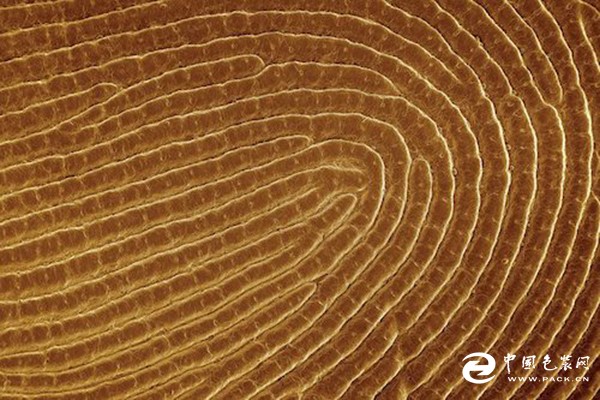
Wrinkles on micro-particles. Image Credit: Clouds Hill Imaging Ltd/Science Photo Library
[Chinese Packaging Network News] Micro-wrinkles that have been squeezed onto the surface of fine plastic particles can be used to make hard-to-copy security keys.
Derek Breid, of St. Vincent College in Pennsylvania, said that these randomly formed wrinkles resembled human fingerprints. Since each set of wrinkles is completely unique, these particles can be used instead of security cards or fingerprints to identify individuals. They are also used for precious works of art, so that people will be able to ensure that they are dealing with genuine art.
The technology developer, Wook Park of Kyung-Hee University in Korea, said that it is almost impossible to clone a key made in this way. Their method involves adding a thin layer of silicon dioxide to the plastic granules and then immersing it in ethanol to allow it to dry. As the particles dry, wrinkles formed within the silicone layer will produce a fingerprint-like structure.
The weak temperature difference or the presence of dust or other particles will make the structure unique. "This is a very chaotic random process," Breid said, making it almost impossible for others to accurately replicate the wrinkle pattern. Making wrinkles this way is easier and cheaper than etching a particular maze with a laser. "It is very important not to use expensive production techniques," he said.
Although the formation of this model was largely random, Park and the team still developed ways to control where some wrinkles formed. They harden a portion of the plastic particles by placing them in the sun, and each hardened point forms a "decision point," where wrinkles end, bend, or separate.
Researchers can at least control some of these parameters and can easily share information. Controlling a group of particles in the same way (eg, making them in contact with the same light pattern) can form matching groups with similar decision points. Although the overall fingerprint is still random, the scanner that reads the particle will be able to identify the position of the decision point so that it knows a key belonging to a group of similar keys like a security card, that is, they can open the same door. For this purpose, they can share among the groups that have access to specific information.
Jan Genzer of North Carolina State University was impressed with this study. "You can control the length and shape of wrinkles very well," he said.
Park and the team are working on a smaller scanner to detect this pattern. They believe that using a conductive scanner capable of reading surface electronic information in a security system is more realistic.
Oue dinnerware products includes knife and for set, ceramic plates set, red wine glass set and red wine goblet.
Knife And Fork Set,Ceramic Plates Set,Red Wine Glass Set,Stainless Steel Red Wine Goblet,Glass Tumbler
Shangwey Cookware Co.,Ltd of Jiangmen City , https://www.shangwey.com